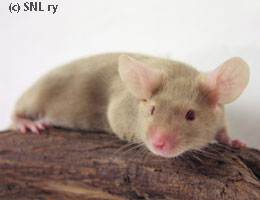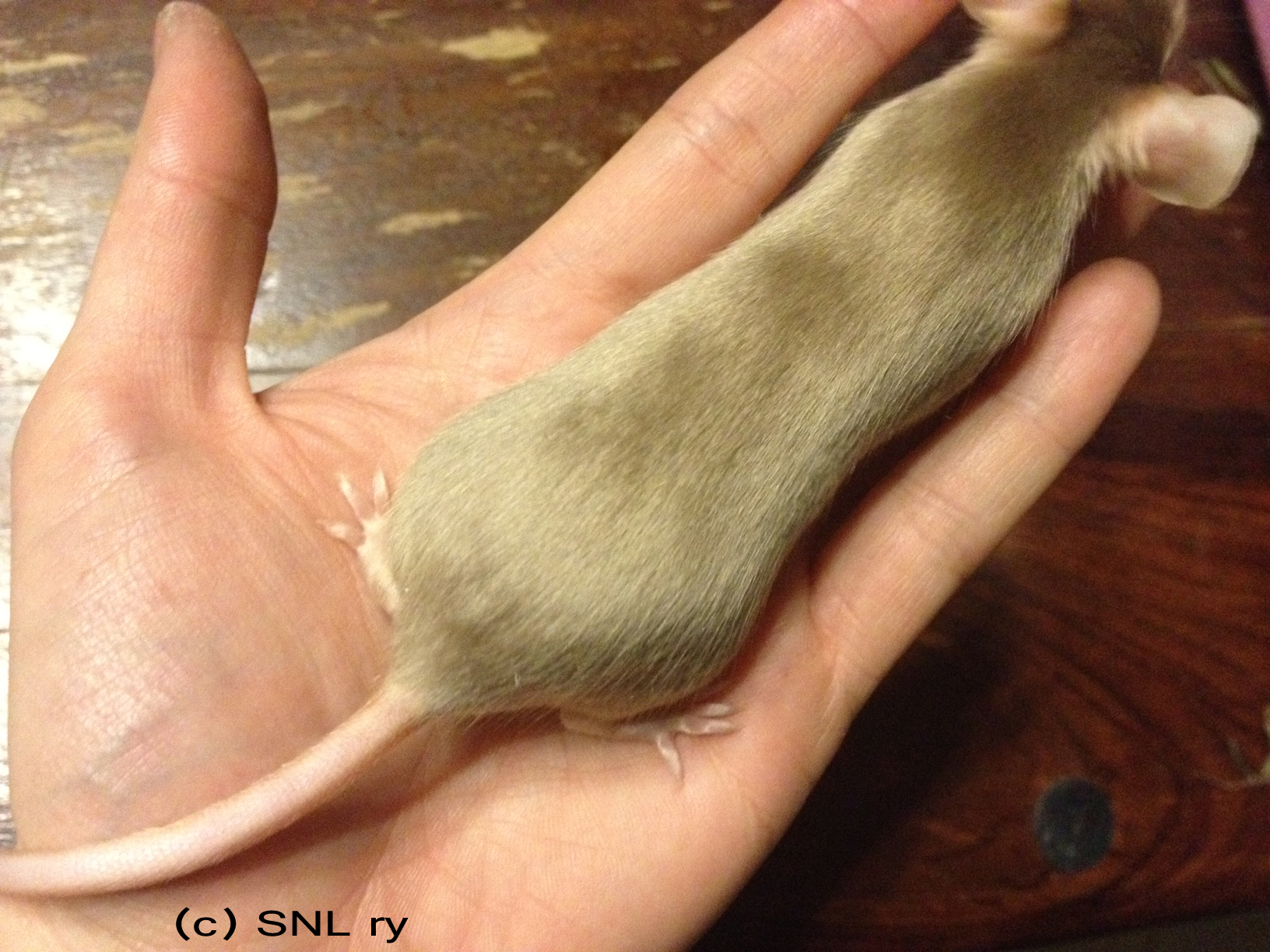Varieties
I - Self
Champagne (cha)
a/a bc/* C/* d/d p/p (Proper show Champagne)
a/a bc/* C/* D/* p/p (Champagne with darker, less delicate, "brownish" hue)
a/a b/b C/* D/* p/p (most likely lighter than the above version, but not as delicate as the standard calls for)
"The colour should be that of champagne silk with a pinkish tinge, free from mealiness and well carried out under. Eye pink."
Breeding information below the pictures.

|
Champagne mouse with excellent type and good, delicately balanced colour. SH Champagne buck Knuspergardens Champagne |
 |
Champagne of too dark a shade. Quite likely a a/a bc/* C/* D/* p/p Champagne. Compare the colour of this mouse with the one above. SHS Champagne buck Rapunzel's Capone |
 | Too dark shs champagne, born out of chocolate lines |
Note: This article is old and waiting to be rewritten.
Quick Look
Champagne is basically genetically a pink eyed chocolate. Like with many varieties, blending of different shades is needed to produce the desired shade. With champagne, the judges' opinions on the exact shade tend to differ - even to the extend where a mouse is said to be too dark by one judge and too light by another... An outcross to silver can be used to lighten the colour after repeated champagne to champagne matings. Other possible outcrosses are light chocolate or champagne -lined PEW. In order to get the better pinkish tinge, an outcross to fawn may help.
It should be noted that British show champagnes are actually genetically pink eyed lilacs (a/a bc/b C/* d/d p/p). When lighter and lighter champagnes slowly became more desirable in shows, breeders crossed champagnes with silvers in order to get the lighter colour. Eventually the pink-eyed lilac established itself as the Show champagne.
